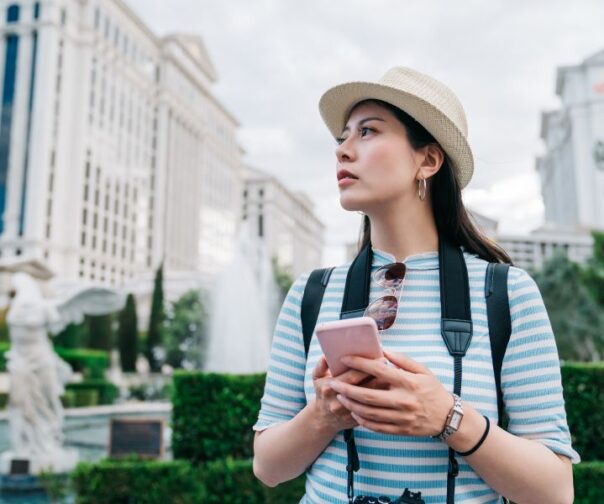Guest Post by Dr.Berenice Pendzialek, Specialist for Chinese tourists.
As mentioned in the first part of our China blog series, Chinese outbound tourism perspectives are positive and we are to see a growth of visits to destinations worldwide. With this in mind, many tourism providers are encountered with the following question: How can I prepare my tours and activities for Chinese tourists? If you want to get a piece of the Chinese tourism cake, read the following practical tips that can help you create China-friendly products and make your clients (both Chinese newcomers and experienced travelers) feel welcome.
The tips are presented according to the tourism provider’s journey, explaining what should be done in terms of product adaptation before being in contact with the tourists, while welcoming them, during and after the tourism experiences.
Before the first contact
A story behind your product, experience, or destination
Chinese tourists love storytelling. When creating content or a script for your upcoming tour, first include what is well-known about your product in general. And parallel to it, do some background research of what is known in China about your product. Are there any relationships between Chinese poems, collective imaginaries, news, Chinese celebrities, and your product? Did the scenery of your destination appear in a Chinese movie or maybe it was described in a poem, like Cambridge King´s College willow in Xu Zhimo´s poem? These pieces of information, can make a difference and help Chinese tourists to create a closer relationship with your product, as well as to pay more attention to your explanations during the tour.
Design of itineraries
When designing routes/ itineraries, take into consideration that inexperienced travelers would appreciate having a small sample of experiences rather than in-depth activities. For many Chinese traveling for the first time to long-haul destinations, travel means status and prestige, which can be achieved with a “the more, the merrier” approach. However, it is important, to avoid hectic-overambitious itineraries. Moreover, do reserve time for regular bathroom and smoking pauses.
While putting together tours for experienced independent travelers, think “the more extravagant, the better”. Especially young Millennials and white-collar Chinese search for prestige and want to learn from their authentic adventures out of the beaten path. Themed tours like Ski tours (due to the upcoming Winter Olympics 2022 to be held in Beijing), flower tourism, food tourism, and river cruises are picking up momentum.
The feeling of getting the best out of something
Chinese travelers, especially those buying online, are keen on spending more time comparing prices and characteristics of a tourism product. Deal hunting is a national sport and for many Chinese tourists, especially those newcomers, prices can play a more important role than the experiences per se. If you want to stand out from the crowd, you can offer cheaper add-ons, discounts, or free gifts, besides your regular tour price, or opt for a basic product at the most accessible price with several add-ons. Multi-buys (3 for the price of 2) are also a beloved option. Do not forget about seasonal offers and discounts. You can put together campaigns during main festivities like Chinese New Year and National Day (For more on Chinese holidays have a look at Dragon Trail´s article).
Besides pricing, your product can be more attractive when accepting Chinese credit cards or mobile online payments. With Regiondo, you can offer several payment options including the ones mentioned above.
Chinese working style
If you have been to China, you can tell that fast and diligent are two words that describe how everyday life works. This mentality is also expected when buying and receiving tourism services abroad. Therefore, you might want to adopt a Chinese working style. Avoid complicated booking processes and be fast with your responses. Forget about 9-5 pm schedules and be prepared to respond 24-7. Call centers can work just fine.
A warm welcome
The importance of Chinese language information
The language barrier is one of the main concerns of Chinese tourists when selecting a tourism product. To avoid misunderstanding, the safest bet is to have Chinese-speaking staff. If not possible, make the effort to have some Chinese brochures or travel guides. Especially, when dealing with quite historical and abstract explanations, a good Chinese translation (not Google Translate!) can help to accurately communicate your message. Moreover, if your program is conducted in English, you might want to learn some Chinese words just to break the ice (Chinavia offers a signage database and other advice in this regard).
While providing Chinese language materials is good, it does not mean that Chinese travelers do not speak other languages. It’s all about giving a face and acknowledging the importance of Chinese travelers in the international tourism scene.
We support Chinese for your offers on Regiondo. Book a demo and delight customers from China today.
Basic amenities
When having Chinese tourists arriving at your attractions/ meeting point, offer them hot water. If dealing with small groups, you can serve everyone directly, otherwise place a water dispenser. Many Chinese carry their personal thermos when traveling and would use the opportunity to refill. A step beyond would be to offer a small selection of good Chinese tea (loose not in tea bags). Green, black, flower, or oolong are popular Chinese teas. Another welcoming idea is to taste small treats of local products while waiting for the tour to start.
During the experience
Connectivity and technology
Connectivity is crucial if you want to delight Chinese tourists. Offer free WiFi in attractions, buses, and wherever possible. Also, mention where they can find free internet access at the destination. By doing so, you not only allow them to share their experiences with family and friends but also to become your brand ambassador.
You can also display QR Codes which lead to extra information available on your digital channels, next to products, or on printed materials. Say you talk about a local fact or detail. After the tour, you can invite your customers to learn more on your Chinese website or social media channels by scanning a QR code. And don´t worry – the Chinese embrace the use of QR Codes way better than their Western counterparts.
Recommended reading: The Top Digital Platforms to Reach Chinese Tourists
Creating photo opportunities
Photos, same as for tourists of other nationalities, represent more than words and are the proof of visitation. These days, Chinese visitors aren’t just interested in shopping, but as well they want to get to know more about the culture and the countryside. Therefore, always point out the best spots for photos and plan enough time for photo taking. If dealing with large groups, make sure to promote a group photo together.
Guidance and clarification
Especially for newcomers, the tour guide/leader still plays a crucial role. Chinese want to have a feeling of security and this is achieved by giving clear directions, emphasizing meeting times, and providing around the clock support. It is also important to share information of what to do in case of a medical emergency (which is, for example, one of the main concerns of elderly travelers when traveling abroad).
For both new and experienced travelers, you might want to share tips of what is the typical life of a local in your destination. Be prepared to receive quite personal questions while doing this, for example, about your job, income, marital status, etc.
Eating rituals
When organizing dinner for less experienced Chinese travelers, a buffet-style with samples of local delicacies is always welcome. Give short introductions of the dishes and allow time for photos. Individual travelers are often foodies and many know in advance what they would like to try in a destination or actively ask for recommendations from the staff or their friends back home. A common activity is to take a photo of the menu and ask their contacts for advice before deciding what to eat.
In Chinese culture, eating plays a central role. It goes beyond the physical need but means to share a good time. Try to give to your customers a feeling of enjoyment and learning while eating. It is also recommended to have the name of a good authentic Chinese restaurant at hand, you never know when your Chinese clients have cravings to taste home away from home. This request can be expected from travelers having long stays abroad.
After the experience
Relationships that last
Chinese Outbound tourism is one of the biggest in the world so make sure to foster relationships after the tour or activity. In digital times, you might want to have a QR Code, for example, printed on your business card. This way, one customer journey ends, but it can be the start of many more thanks to online word of mouth.
Conclusion
Now you have China-friendly products ready, but how do you let Chinese tourists know about them and what digital touchpoints are there at your disposal? In the next blog entry, we discuss how to reach Chinese tourists online before visiting a destination.
Dr. Berenice Pendzialek is a writer for Travel Massive. For over 10 years, Berenice has devoted herself to Chinese Tourism and possesses extensive knowledge on the topic of outbound tourism to Europe. She is the former general manager for China Outbound Tourism Research Institute (COTRI). Since 2013 she lives in Hamburg and works as a freelance consultant. She also started Hamburg’s Travel Massive chapter in 2015.






